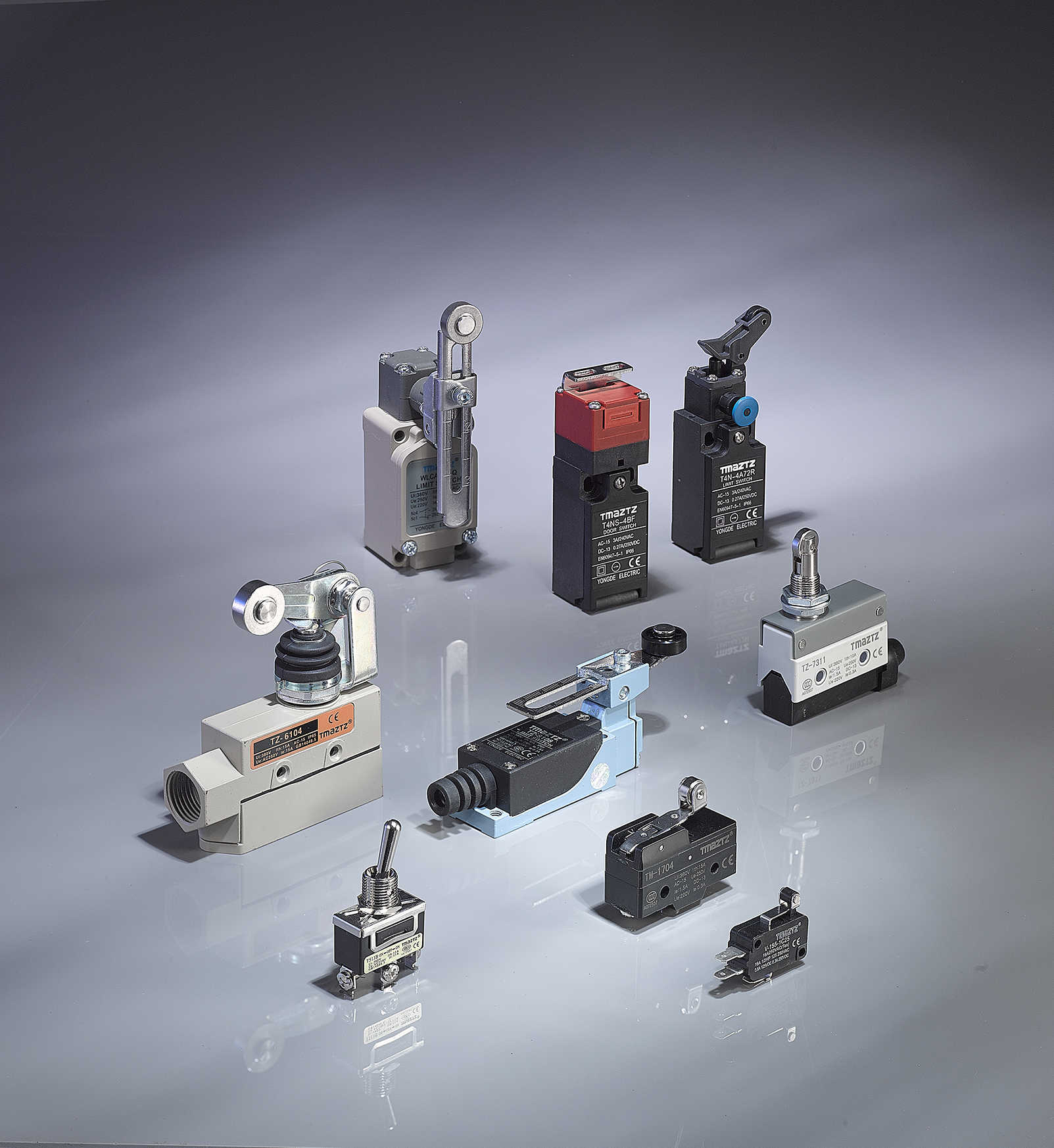Jun. 23,2025
Industrial switches come in various forms, each designed for specific functions. Engineers must consider factors such as application, environmental conditions, and electrical requirements when selecting a switch.
| Switch Type | Function | Applications | Key Features |
| Limit Switches | Detect the presence or position of an object, commonly used in automated machinery. | Conveyor systems, CNC machines, robotic arms | • Robust housing (metal or high-strength plastic) • Long mechanical lifespan • Lever, roller, or plunger actuation types |
| Safety Limit Switches | Provide fail-safe operation in emergency stops or safety interlocks. | Machine guarding, elevator doors, industrial safety systems | • Positive-opening contacts (safety compliance) • High durability for frequent use • Certified to ISO 13849/IEC 60947-5-1 |
| Micro Switches | Compact switches with snap-action mechanism for precise control. | Household appliances, automotive systems, control panels | • Small size with high precision • Fast response time • Long service life (millions of cycles) |

When choosing between limit switches, safety limit switches, and micro switches, engineers should consider:
1.Environment – Will the switch be exposed to dust, water, or extreme temperatures?
2.Electrical Ratings – Does it match the required voltage and current?
3.Mechanical Requirements – What actuation type (lever, roller, plunger) is needed?
4.Safety Compliance – Is certification (e.g., UL, CE, IEC) required?
5.Durability – How many actuation cycles must it withstand?
Define the Application – Is it for position detection, safety interlocking, or precision control?
Check Environmental Conditions – Choose IP-rated switches for harsh environments.
Verify Electrical Specs – Ensure voltage/current ratings match the system.
Select the Right Actuation Type – Lever, roller, or plunger based on mechanical needs.
Test Before Finalizing – Validate performance in real-world conditions.
Understanding the differences between limit switches, safety limit switches, and micro switches helps engineers make informed decisions. Whether you need position sensing, safety compliance, or compact precision control, selecting the right switch ensures reliability, safety, and efficiency in your projects.
FAQ
Q: What is the main difference between a limit switch and a micro switch?
A: Limit switches are typically larger and used for industrial position sensing, while micro switches are smaller, faster-acting, and often used in appliances and electronics.
Q: When should I use a safety limit switch?
A: Use them in emergency stop circuits, safety doors, or hazardous machinery where fail-safe operation is critical.
Q: Can micro switches handle high current loads?
A: Most micro switches are designed for low-current applications, but heavy-duty versions are available for industrial use.
Q: Are limit switches waterproof?
A: Many have IP67 or higher ratings, making them suitable for wet or dusty environments.
Q: What certifications should I look for in safety switches?
A: Check for ISO 13849, IEC 60947-5-1, or UL certification depending on regional requirements.
This version keeps the engaging style while focusing on limit switches, safety limit switches, and micro switches—making it more relevant to industrial and automation applications. Let me know if you'd like any refinements!